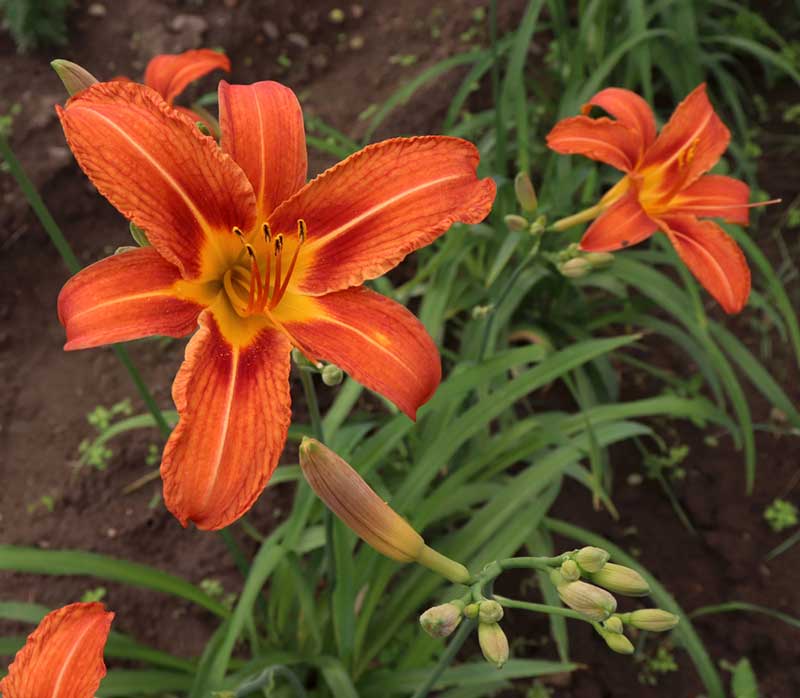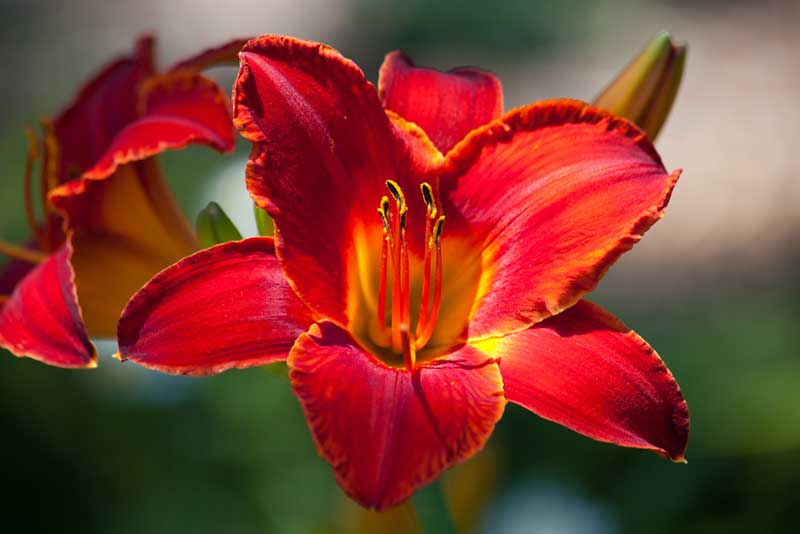Daylilies are a plant that is relatively simple to grow. They do not require a lot of additional care or maintenance, and they can grow year after year. They are a very colorful flower that comes in shades of red, pink, and purple.
In this guide, I am going to lay out 10 tips that can help you grow these beautiful flowers with ease in your garden.
1. Planting
Most daylilies can be planted from a bulb, but they take time to grow, and little insects and critters that come to your garden at night may not leave the plant along long enough for it to grow. It is best to start a plant like this one inside in a container. Many that you purchase that are already planted will have up to three plants in the container, which will help you to get a larger supply of daylilies without spending a lot on new plants that will not grow to maturity.
2. Full Sun is Best
Most daylilies will grow in the shade; however, you will find that they do much better in full sun conditions. They should have at least four to five hours of full sun a day so that the plant produces more blooms. More sun will be better, but a little shade will ensure that the plant’s leaves and foliage will not become too scorched in the sun.
3. Give Your Plants the Proper Soil
Most daylilies are not fussy about the type of soil that they grow in. They do like to have well-drained soil that does not hold a lot of water so that the roots do not become overly soggy. Make sure that you do not plant them near a drainage spout or an area in your garden where the water lays because this can cause the roots to stay wet for far too long, which can cause the plant to get root rot and other diseases.
4. Watering
When you are looking to water your new plant, they are going to require the most water during the first year that they are planted. After that first year, the plant is going to be more drought tolerant, so if you water them on the days when the soil feels dry to the touch, they will thrive. Typically, these plants will do fine with just a drink when it rains, but if it has not really rained within five to six days, you will want to give the plant some water to make sure that the blooms do not suffer.
5. Do Not Overcrowd Your Daylilies
Certain plants are okay to be planted close together in a garden, while others will suffer if they are too close together. In general, a daylily is a plant that needs a bit of space to thrive, so when you plant them for the first time, you will want to give them at least 12 inches between each plant. These tend to spread very quickly in an open garden, so planting them further apart can help prevent the plants from being too overcrowded. If you allow the plants to become too overcrowded, you are likely going to have trouble removing any weeds that poke up into the cluster of flowers.

6. Deadheading is a Must
When your plant has blooms that are tuckered out, then you are going to need to remove them from the plant so that they do not continue sucking nutrients from the plant. Any wilted flowers should be pinched off as soon as possible so that new ones can be created. In most cases, this is a plant that will deadhead itself by allowing the bloom to simply fall off of the plant when it is done growing. You will also need to prune any dead foliage from the plant before it begins growing again each year.
7. They Return Annually
These are perennial plants, so they are going to come back each year. This will help to create a very full garden, especially since the plant tends to come back fuller each year. This ability to spread and multiply is a great way to fill up your garden space, and if it begins to overtake your other plants, you can simply uproot a portion of the plant to move to another location.
8. Dividing Daylilies
Since your plant is likely to grow much faster than you want it to, you are going to need to divide them to keep them where you want them to grow. Daylilies should be divided in either the fall or the spring. When you separate them, you will want to dig up the entire root ball of the plant that you are moving. This should be done every two to four years, but if you have the space to allow them to continue growing, you can wait longer.
9. Pests
There are not many pests that bother daylilies, but the majority of them that do are insects such as aphids, spider mites, and thrips. Slugs can also be a pest to daylilies, so you will need to remove the slugs safely if you find to much slime on the plants. When insects infect your plant, the blooms will not open properly. The best way to clear away the pests is to give your plant a soapy treatment each week to wash them away. You can also spray the plants once a week or so. The other primary concern for these plants is the deer that live in the area, so if you have this problem, you may want to put up a fence to deter them.
10. Other Common Concerns
Other health issues to worry about with a daylily include rust and leaf streak. They are fungal issues that affect the way that the leaf looks. In fact, the foliage will appear to be yellow or orange during warmer weather conditions. If the residue is a powdery substance, it will wipe off easily. Cut back any plant that has one of these fungal issues.




